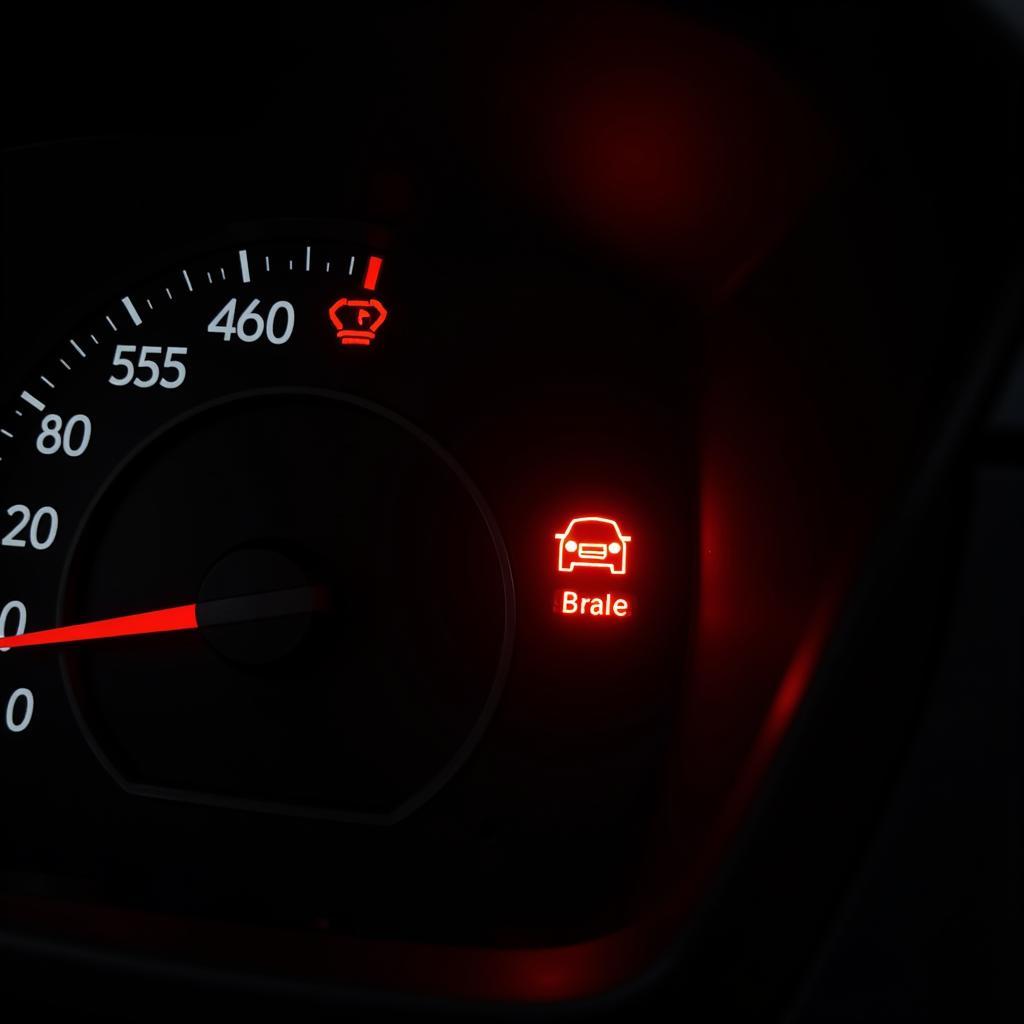A Mercedes-Benz brake warning message illuminating on your dashboard can be a jarring experience. While these warnings are designed to alert you to potential issues with your braking system, they can also be triggered by minor glitches or sensor malfunctions. This comprehensive guide delves into the common causes of Mercedes brake warning messages and provides practical steps for diagnosis and resolution.
Understanding Your Mercedes Brake Warning System
Before diving into troubleshooting, it’s crucial to understand how your Mercedes brake warning system operates. The system comprises various components, including:
- Brake Pads: Equipped with wear sensors, these pads trigger a warning light when they thin out, indicating the need for replacement.
- Brake Fluid: A low brake fluid level can seriously compromise braking performance. Your Mercedes monitors this level and alerts you when it drops below a safe threshold.
- Brake Sensors: These sensors, strategically positioned throughout the braking system, monitor parameters like wheel speed and brake pressure. Any anomalies detected by these sensors trigger a warning message.
- Electronic Control Unit (ECU): This central processing unit receives data from the various sensors and activates warning lights on the dashboard if it detects any issues.
Common Causes of Mercedes Brake Warning Messages
A range of factors can cause brake warning messages to appear on your Mercedes dashboard. Here are some of the most prevalent culprits:
- Worn Brake Pads: As your brake pads wear down over time, the built-in sensors trigger a warning light on your dashboard, prompting you to replace them.
- Low Brake Fluid: A drop in brake fluid level is often a sign of a leak in the braking system, which demands immediate attention.
- Faulty Brake Sensors: A malfunctioning sensor can send erroneous signals to the ECU, triggering a false warning message.
- ABS Issues: Problems within the Anti-lock Braking System (ABS), such as a faulty wheel speed sensor, can lead to warning lights.
- Electronic Parking Brake (EPB) Malfunctions: Issues with the EPB, often due to a faulty switch or sensor, can trigger warning messages.
Diagnosing Mercedes Brake Warning Messages
Pinpointing the root cause of a brake warning message involves a systematic approach:
-
Check the Brake Fluid Level: Locate the brake fluid reservoir (refer to your owner’s manual) and visually inspect the fluid level. If it’s below the minimum mark, there might be a leak requiring immediate professional attention.
-
Inspect the Brake Pads: Assess the thickness of your brake pads by looking through the spaces between the wheel spokes. If they appear significantly thin, it’s time for a replacement.
-
Scan for Diagnostic Trouble Codes (DTCs): Using a specialized OBD-II scanner, you can retrieve stored DTCs from your Mercedes’s ECU. These codes provide valuable insights into the specific areas triggering the warning message.
 Mercedes Brake Warning Light on Dashboard
Mercedes Brake Warning Light on Dashboard
Resetting Mercedes Brake Warning Messages
After addressing the underlying issue that triggered the warning message, you might need to reset the system. While the exact procedure can vary across models, a common approach involves:
- Turn the Steering Wheel: Turn the steering wheel fully to the left and then to the right.
- Turn the Ignition On and Off: Cycle the ignition key to the “on” position (without starting the engine) and then back to the “off” position a few times.
- Drive the Vehicle: Take your Mercedes for a short drive, exceeding a specific speed (usually around 10 mph), to allow the system to recalibrate.
When to Seek Professional Help
While some brake warning messages might stem from minor issues you can address yourself, it’s crucial to recognize situations that warrant professional intervention. Contact a qualified Mercedes technician immediately if:
-
You notice brake fluid leaks.
-
The brake pedal feels spongy or unresponsive.
-
You hear unusual noises (grinding, squealing) while braking.
-
The warning message persists even after attempting troubleshooting steps.
“Ignoring brake warning messages can lead to dangerous situations on the road,” warns Mark Schmidt, a seasoned Mercedes technician with over 20 years of experience. “These systems are designed to alert you to potential issues early on, and addressing them promptly is paramount to ensure your safety and the longevity of your vehicle.”
Remote Diagnostics and Programming: The Future of Car Repair
Advancements in automotive technology have paved the way for remote diagnostics and programming, offering convenient solutions for resolving certain brake warning messages. Using specialized software and equipment, certified technicians can:
- Remotely access your Mercedes’s ECU: This access allows for comprehensive diagnostics and identification of the root cause behind the warning message.
- Perform software updates and reprogramming: In some instances, brake warning messages might be due to software glitches. Remote programming allows technicians to install the latest software updates and rectify these issues.
- Offer guidance and support: Through remote sessions, technicians can walk you through basic troubleshooting steps or help you understand the severity of the issue.
Conclusion
A Mercedes brake warning message serves as a critical alert system, prompting you to address potential issues with your braking system. By understanding the common causes, learning how to diagnose the problem, and knowing when to seek professional help, you can ensure your Mercedes remains safe and performs optimally on the road. Remember, prioritizing brake system maintenance and addressing warning messages promptly is not just about keeping your car in good shape but also about ensuring your safety and the safety of others on the road.

